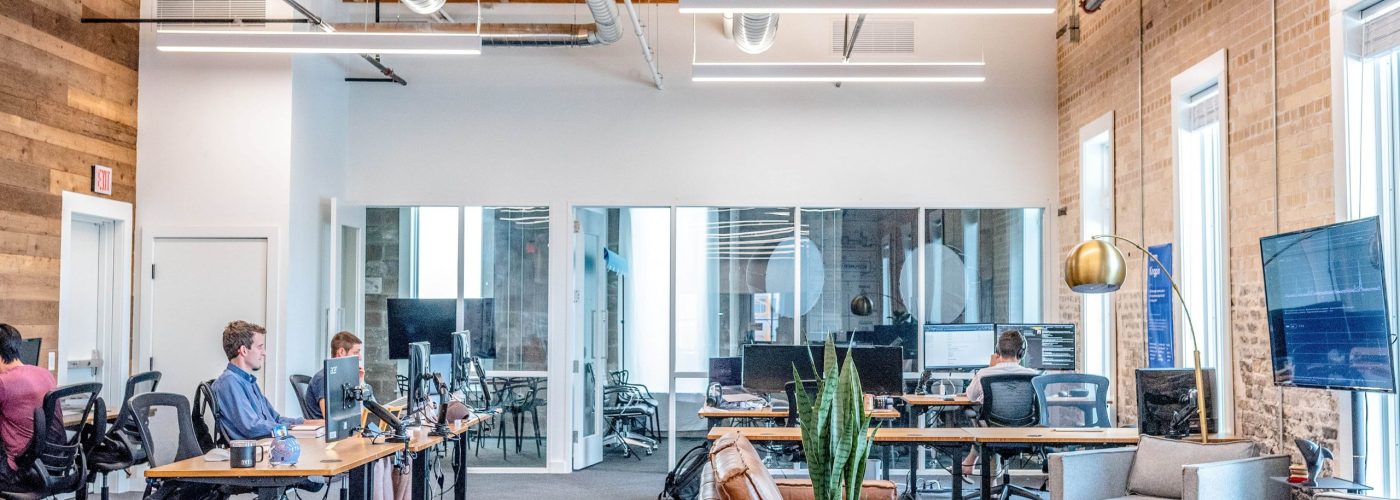Smart building technology essentially consists of a system of connected devices which can measure data from your building and transform it into usable insights and automation. Rather than relying on manual control of your facility management and maintenance systems, smart building systems do the hard work for you.
The benefits of a smarter building include:
- Improved employee wellbeing
- Operational efficiencies
- Energy efficiency
- Reduced maintenance costs
- Higher productivity
The buildings and the construction sector accounts for 36% of global energy demand and 40% of direct and indirect CO2 emissions. Smart technology plays a key role in reducing emissions and helping companies become more sustainable. That’s why it’s vital to find ways to make buildings smarter and more efficient.
But what if you don’t plan on moving premises or building a new facility any time soon? The good news is that there are easy ways to invest in smart technology for older buildings. A building need not be shiny and new to be smart. There are a number of smart solutions that can be retrofitted into existing buildings easily.
Here are 7 examples of how the UK’s estate managers and commercial building operators are developing intelligent offices within existing buildings, making life easier AND saving them money.
1. Smart Lighting
A smart lighting solution is one of the simplest changes a building can make to reduce energy consumption and expenditure. Replacing traditional lightbulbs with smart LEDs gives you maximum control of your lighting systems:
- Choose any colour and lighting temperature
- Set specific times of operation
- Set automatic shutdown if the building is vacant
- Dim lights gradually
- Add security features like cycling lights on and off
- Automatically adjust indoor lighting levels to current sunrise/sunset times and weather conditions
All these features can be automated and controlled remotely across your building portfolios, allowing you to improve the quality of life of your building occupants and reduce your energy bill.
2. Smart HVAC
According to a 2016 study conducted by the Gas Technology Institute (GTI), a predictive and proactive HVAC system can save a building 30% – 70% more energy from November to March.
Smart HVAC systems are a comprehensive and efficient way to curb energy consumption. Sensors and data sources can report on weather, occupancy and more, automatically adjusting HVAC temperatures for optimum results and minimal energy use.
Smart sensors can be retrofit to existing HVAC equipment. They transmit data to the cloud to provide insights and information and allow building owners to immediately identify problem areas and implement real-time temperature control.
3. Automated Legionella Compliance Systems
Automatic flushing and temperature testing systems save significant resources when it comes to ensuring Legionella compliance. Instead of having to manually run taps for two minutes and test the hot and cold temperatures, an automatic Legionella testing unit can flush outlets and measure the temperature at predefined intervals automatically. Data is sent to a central management dashboard, and regular reports are generated automatically, removing the need to manually keep testing records for the required five years.
4. Smart Tags
Smart tags can be retrofitted to almost any equipment in your building, allowing you to track everything you need to. You can then use this dynamic control and efficient, real-time monitoring and reporting to inform data-driven decisions and promote profitability.
5. Occupancy Monitoring
Monitor your building and employees with real-time information on desks, meeting rooms and other facilities. Knowing how many people are using which rooms and when can help you proactively manage your workforce and make the best use of the space in your building, improving energy efficiency and encouraging better collaboration.
With social distancing protocols top-of-mind at the moment, occupancy monitoring technology can also help you ensure that policies are being adhered to.
6. Air Monitoring
Air quality and ventilation are key concerns when it comes to limiting the spread of infection. With air quality monitoring technology, you can monitor your air quality in real time to stay compliant with legislation and protect your staff, particularly in insulated buildings where air quality is affected by high occupancy.
7. Fire Safety Monitoring
Manual checks on fire safety equipment are time-consuming and labour-intensive. By retrofitting smart sensors onto this equipment, you can keep your building safe and compliant without the hassle. Smart sensors can monitor your fire doors, fire extinguishers and smoke detectors and alert you immediately in any change of condition. Automatically-generated reports are also available at your fingertips.
Rapid advancements in technology are allowing facility managers to realise a quick return on investment in terms of reduced energy and maintenance costs. Smart building management can consist of a phased approach or a complete overhaul, delivering a sustainable blueprint for the future.





